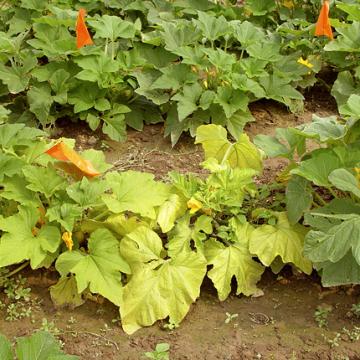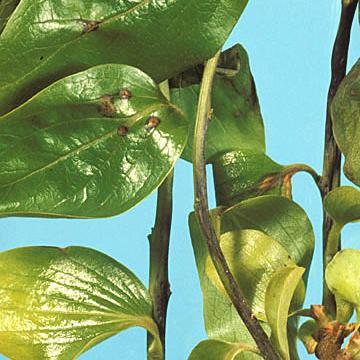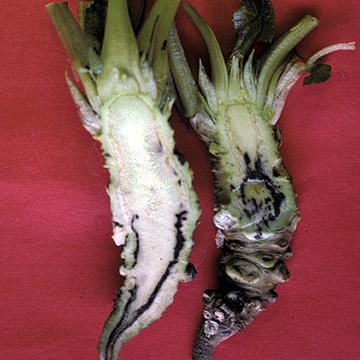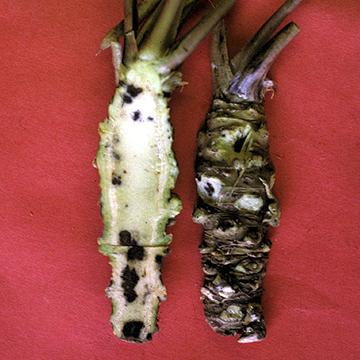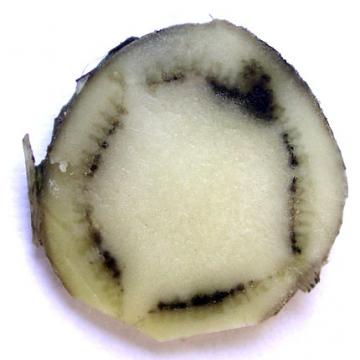DISEASE: Aster yellows
HOST: Squash
Diagnostic characteristics for the disease are yellowing of young leaves, proliferation of secondary shoots, and rigid erect habit. Leaves are misshapen and smaller than normal and have stiff, thick laminae.
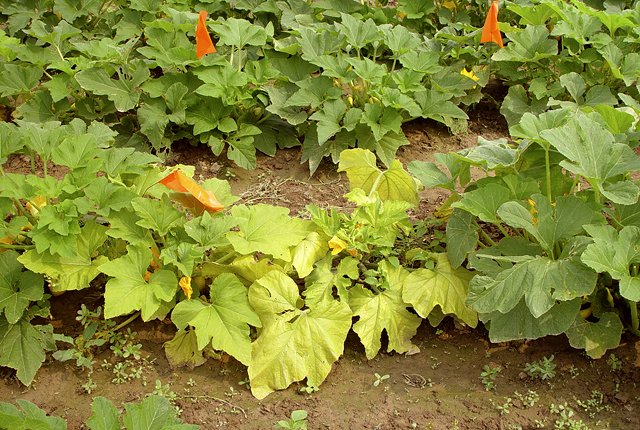
Aster yellows | Squash
DISEASE: Aster yellows
HOST: Squash (Cucurbita sp.)
PATHOGEN: 'Candidatus Phytoplasma asteris'
PATHOGEN SYNONYM: Phytoplasma Aster yellows group
SOURCE: S. Miller
DISEASE: Bacterial blight
HOST: Persimmon
Diseased shoots with spots on leaves and necroses on stems.
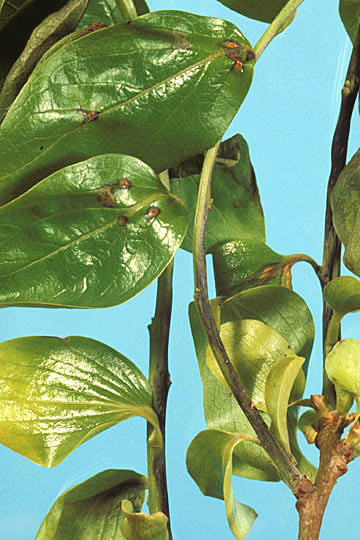
Bacterial blight | Persimmon
DISEASE: Bacterial blight
HOST: Persimmon (Diospyros sp.)
PATHOGEN: Pseudomonas syringae
SOURCE: J. Young
DISEASE: Bacterial leaf spot
HOST: Persimmon
Systemic infection of stems and small, black lesions on leaves.
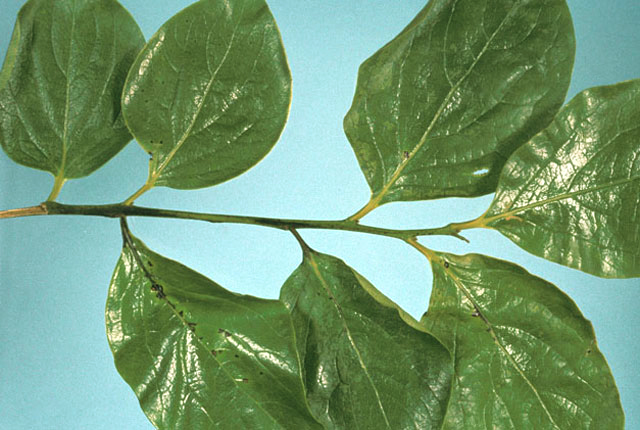
Bacterial leaf spot | Persimmon
DISEASE: Bacterial leaf spot
HOST: Persimmon (Diospyros kaki 'Gailey')
PATHOGEN: Xanthomonas campestris
SOURCE: J. Young
DISEASE: Bacterial soft rot
HOST: Wasabi (Japanese horseradish)
Longitudinal sections of diseased rhizomes with discolored vascular tissues.
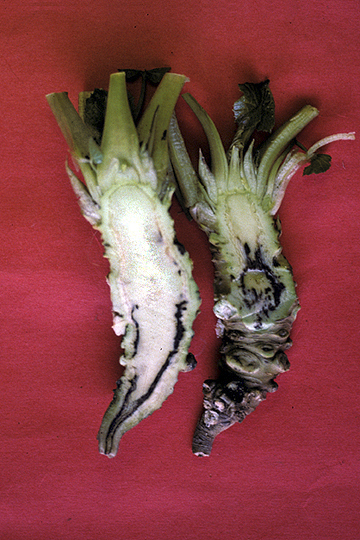
Bacterial soft rot | Wasabi (Japanese horseradish)
DISEASE: Bacterial soft rot
HOST: Wasabi (Japanese horseradish) (Wasabia japonica)
PATHOGEN: Pectobacterium wasabiae
PATHOGEN SYNONYM: Erwinia carotovora subsp. wasabiae
SOURCE: M. Goto
DISEASE: Bacterial soft rot
HOST: Wasabi (Japanese horseradish)
Longitudinal section of rhizome with discolored vascular bundles (left), and rhizome with external symptoms (right).
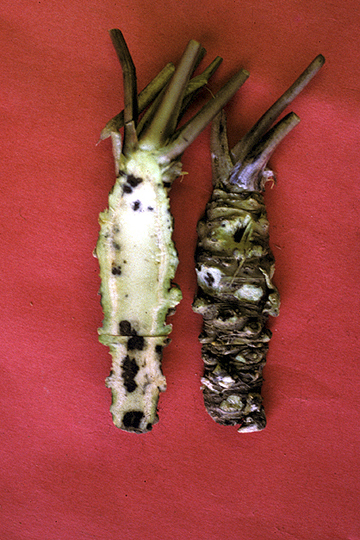
Bacterial soft rot | Wasabi (Japanese horseradish)
DISEASE: Bacterial soft rot
HOST: Wasabi (Japanese horseradish) (Wasabia japonica)
PATHOGEN: Pectobacterium wasabiae
PATHOGEN SYNONYM: Erwinia carotovora subsp. wasabiae
SOURCE: M. Goto
DISEASE: Bacterial soft rot
HOST: Wasabi (Japanese horseradish)
Cross section of rhizome with dark, infected vascular bundles.

Bacterial soft rot | Wasabi (Japanese horseradish)
DISEASE: Bacterial soft rot
HOST: Wasabi (Japanese horseradish) (Wasabia japonica)
PATHOGEN: Pectobacterium wasabiae
PATHOGEN SYNONYM: Erwinia carotovora subsp. wasabiae
SOURCE: G. Rodriguez
DISEASE: Bacterial wilt
HOST: Squash
Field with severe symptoms of wilt. Foliage often is chlorotic and leaf margins may be chlorotic and necrotic before plant death. Bacterial ooze may be seen streaming from the xylem when infected stems are cut.
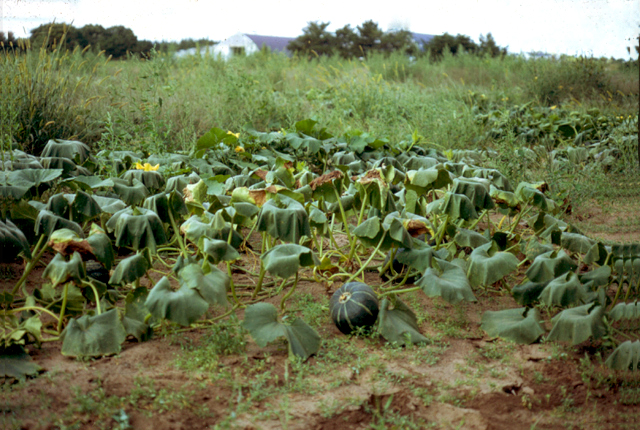
Bacterial wilt | Squash
DISEASE: Bacterial wilt
HOST: Squash (Cucurbita maxima)
PATHOGEN: Erwinia tracheiphila
SOURCE: B. Jacobsen, M. Shurtleff


